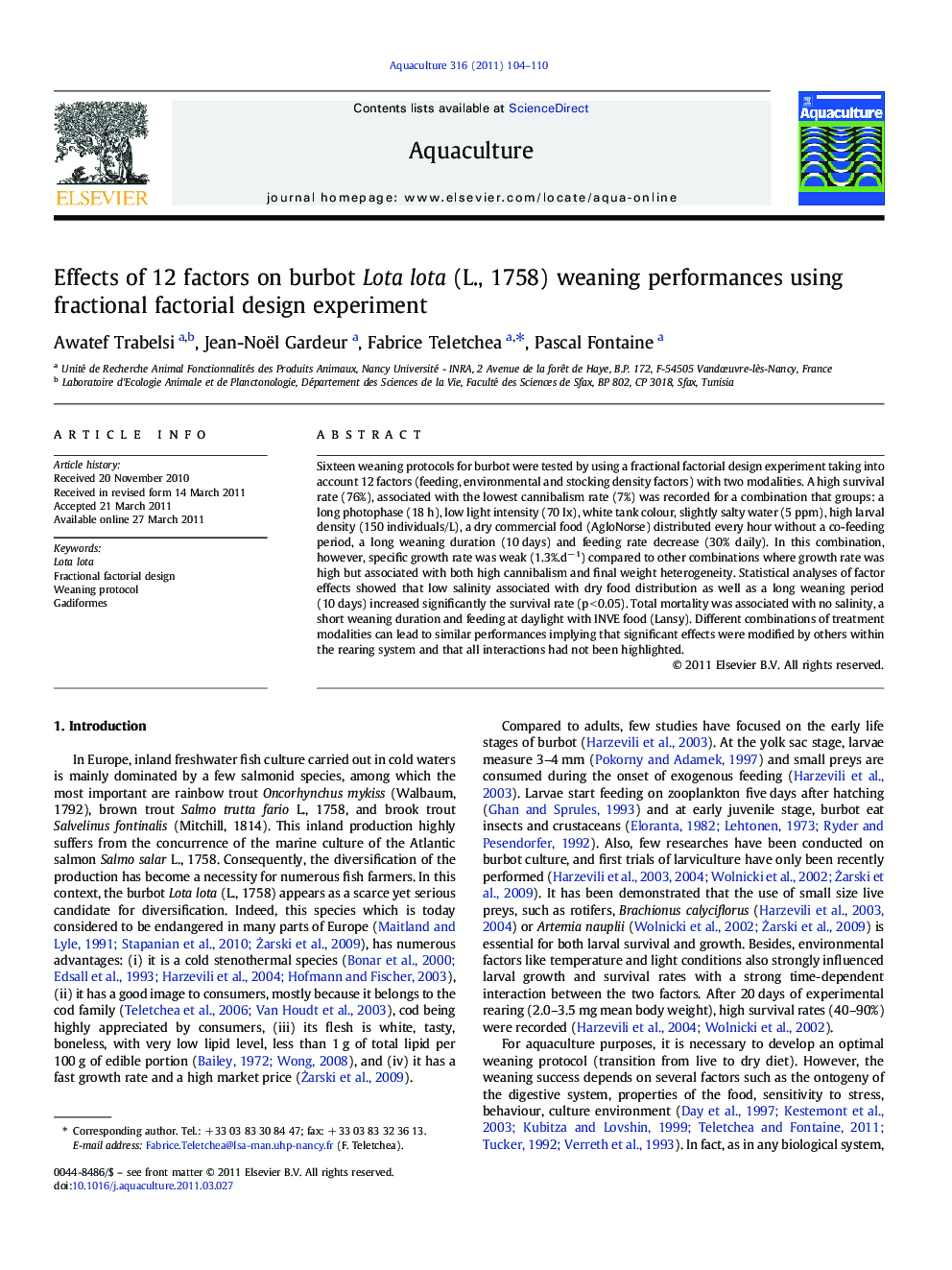| Article ID | Journal | Published Year | Pages | File Type |
|---|---|---|---|---|
| 2422949 | Aquaculture | 2011 | 7 Pages |
Sixteen weaning protocols for burbot were tested by using a fractional factorial design experiment taking into account 12 factors (feeding, environmental and stocking density factors) with two modalities. A high survival rate (76%), associated with the lowest cannibalism rate (7%) was recorded for a combination that groups: a long photophase (18 h), low light intensity (70 lx), white tank colour, slightly salty water (5 ppm), high larval density (150 individuals/L), a dry commercial food (AgloNorse) distributed every hour without a co-feeding period, a long weaning duration (10 days) and feeding rate decrease (30% daily). In this combination, however, specific growth rate was weak (1.3%.d−1) compared to other combinations where growth rate was high but associated with both high cannibalism and final weight heterogeneity. Statistical analyses of factor effects showed that low salinity associated with dry food distribution as well as a long weaning period (10 days) increased significantly the survival rate (p < 0.05). Total mortality was associated with no salinity, a short weaning duration and feeding at daylight with INVE food (Lansy). Different combinations of treatment modalities can lead to similar performances implying that significant effects were modified by others within the rearing system and that all interactions had not been highlighted.
